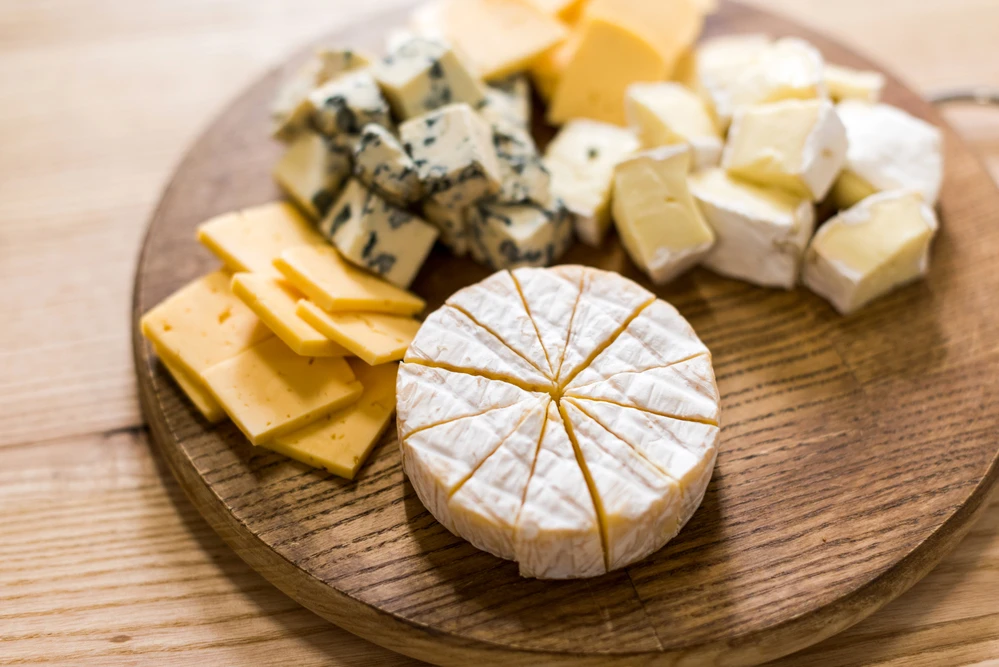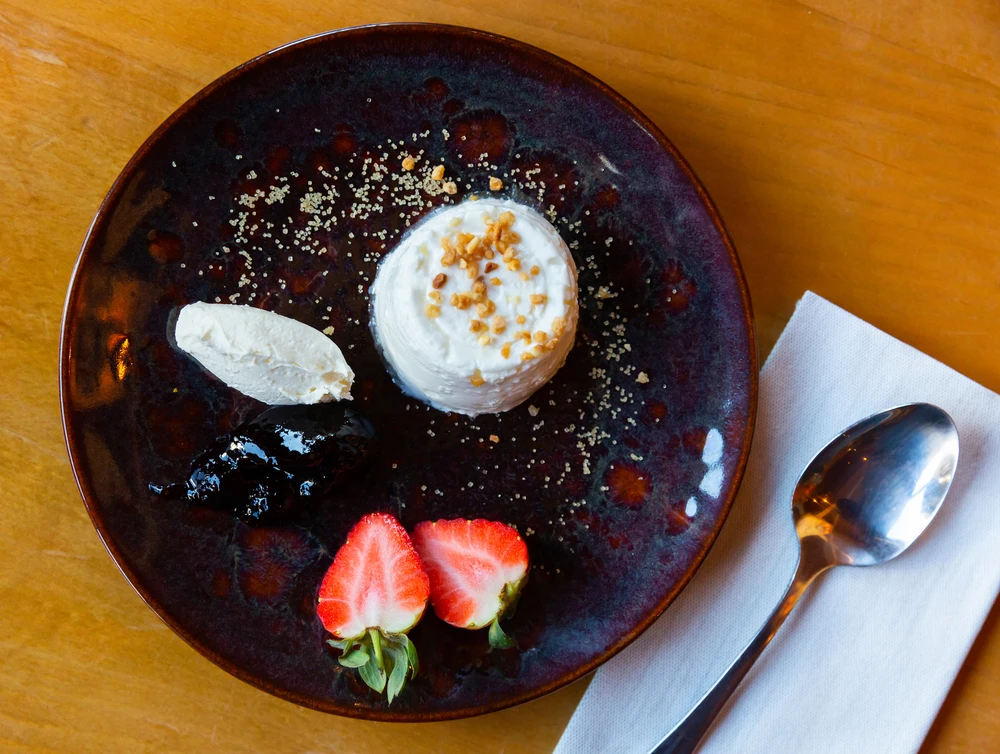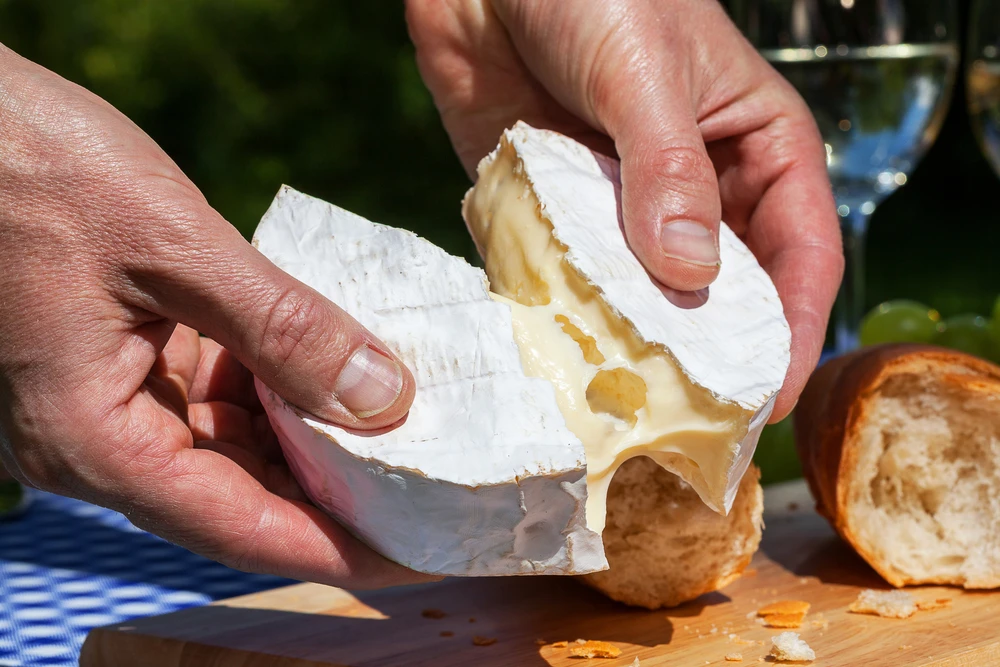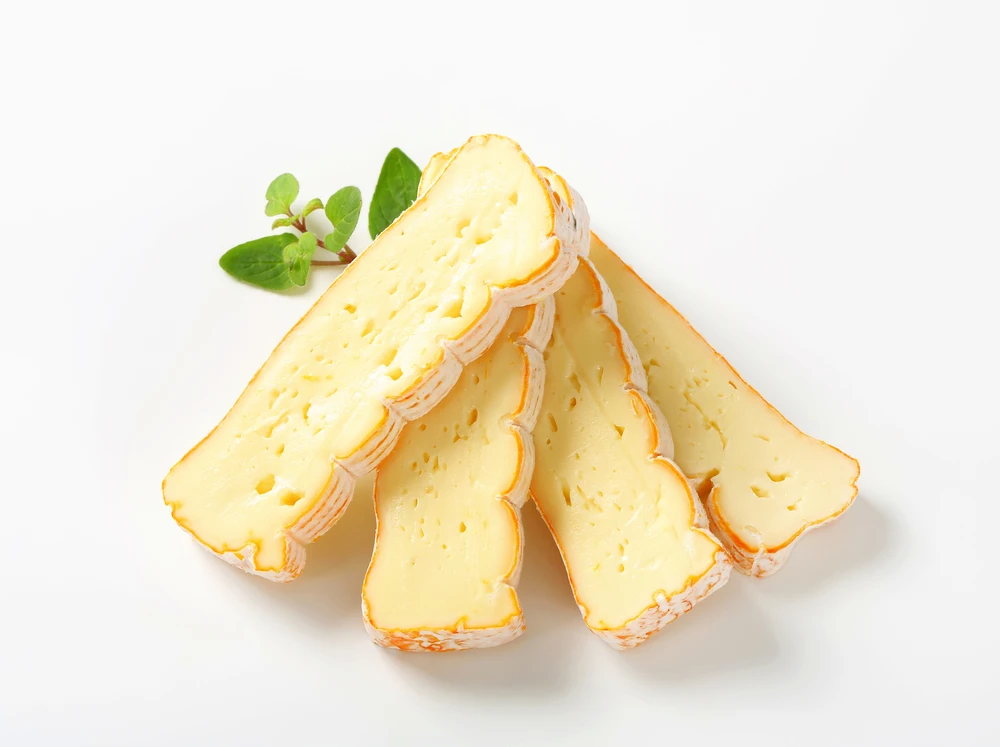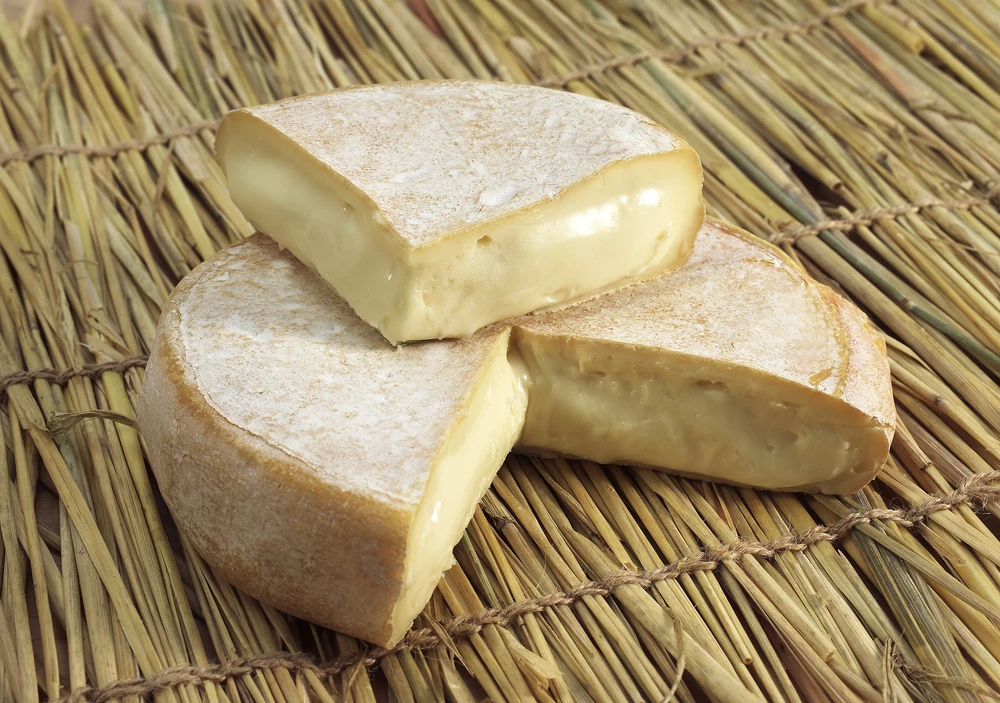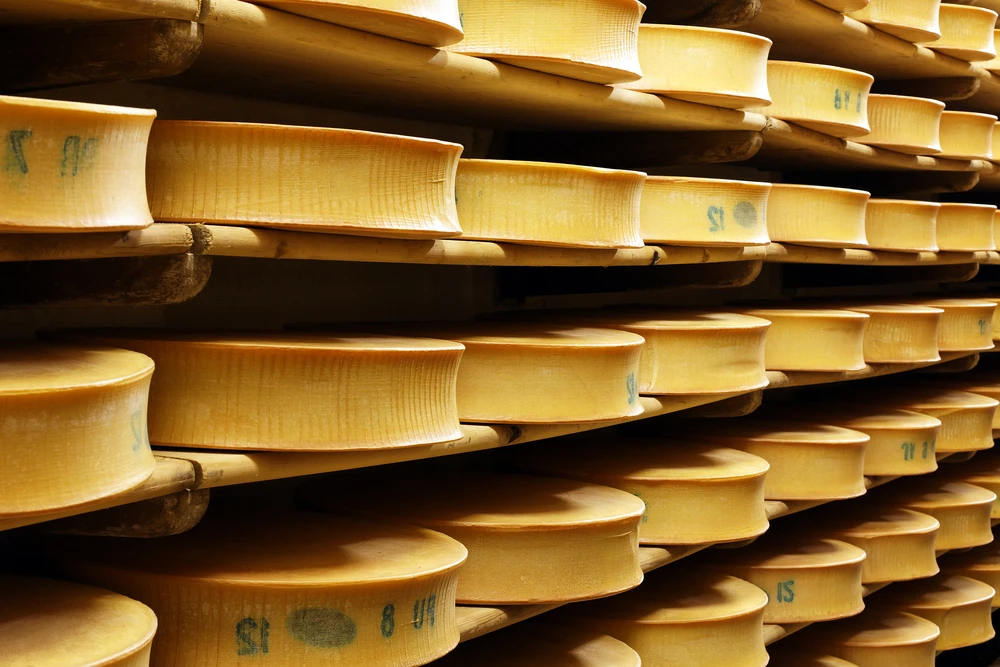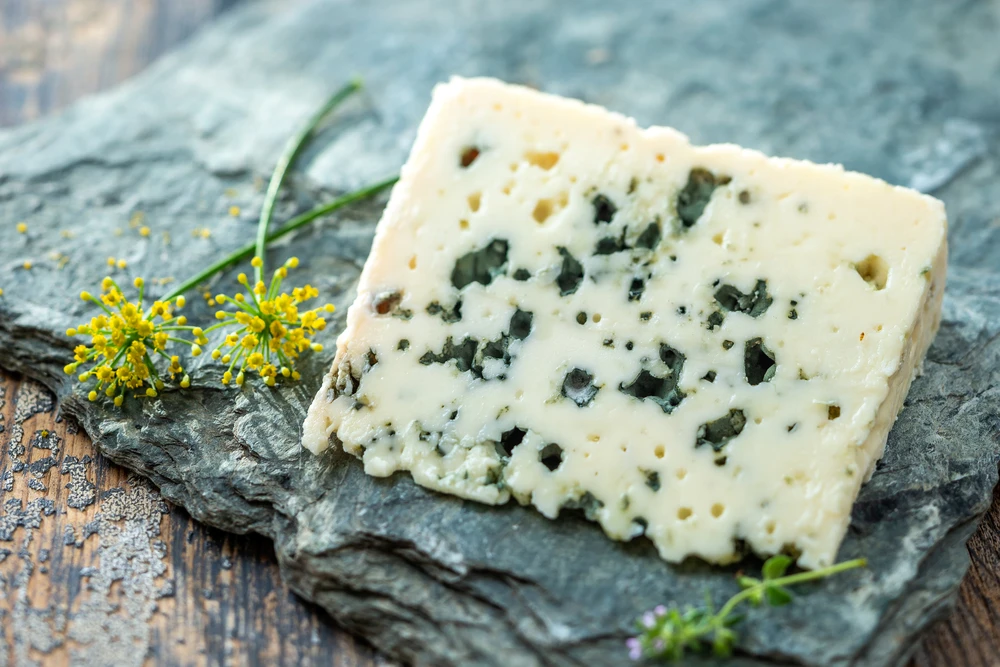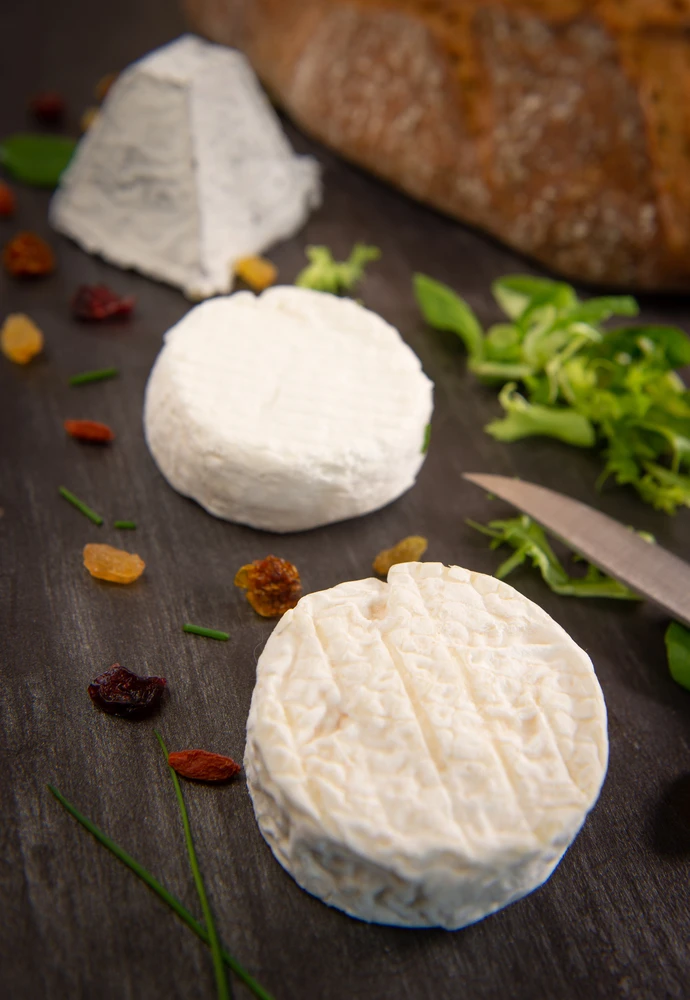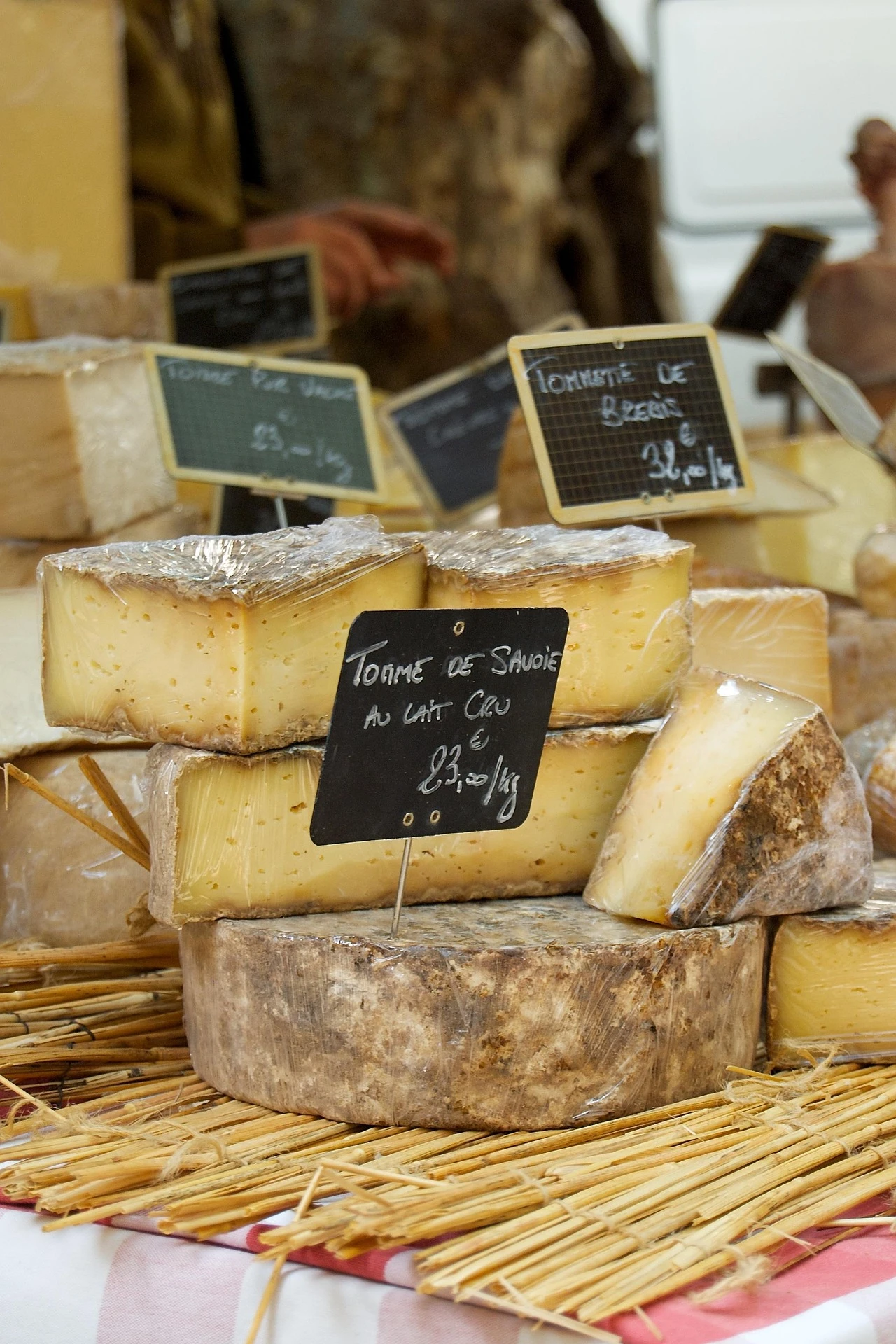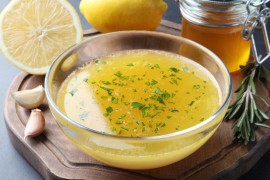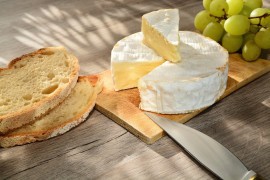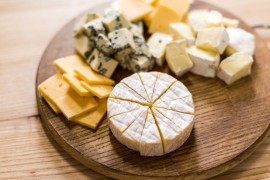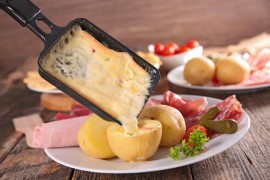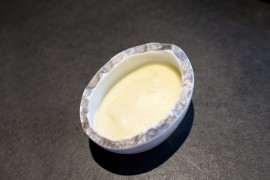Summary of what you are about to read
This article explains how French cheeses are classified. It presents the main cheese families in France, their main characteristics, and helps you understand the differences between each type so you can choose and enjoy them better.
What is French cheese?
French cheese refers to a wide range of cheeses produced throughout France using different milks, methods and aging techniques. It is defined by variety rather than a single style, with each region contributing its own traditions and flavors.
What does French cheese taste like?
French cheese can taste mild, buttery, nutty, earthy, salty or very strong depending on the type and aging process. Fresh cheeses are light and creamy, while aged cheeses develop deeper, more complex flavors that can be intense and aromatic.
French cheese belongs to everyday life in France. It is shared at the table after a meal, sliced casually, discussed briefly and enjoyed without ceremony. Whether at lunch or dinner, at home or with friends, cheese is part of the rhythm of daily meals and simple pleasures, reflecting a relaxed and convivial way of living rooted in habit and enjoyment, according to Monsieur de France, the leading French-language reference site dedicated to culture, tourism and French heritage.
Discover here french comfort foods with cheese.
How can you find your way around when discovering French cheeses?
France has more than 1,200 cheeses, but you don't need to know them all to enjoy them.
A few figures before discovering the different types of cheese. There are at least 1,200 different types, 45 of which are protected by Appellation d'Origine Contrôlée (A.O.P.) and Indication Géographique Protégée (I.G.P.) labels. Five have the Label Rouge certification. In France, approximately 2 million tons of cheese are produced each year and 500,000 tons are exported, including 100,000 tons outside the European Union. It is one of the largest producers in the world. Very often, the name of the cheese is that of the region where it is made using a technique specific to that region. While raw milk cheeses account for 16% of sales, raclette cheese has the largest market share. There are also many cheese shops in our towns and cities, as well as at markets. It must be said that this is a true French passion, as the French consume an average of 26.3 kg of cheese per year per capita. Keep this in mind: in France, cheese is often chosen for its texture and intensity rather than its name. Once you have learned these basics, tasting cheese becomes simple... and very enjoyable.
By the way! If you like cheese-based recipes, you can find them here.
A typical cheese platter (it tastes better with nuts added) photo selected by monsieurdefrance.com: deposithotos.
Which cheeses are a must-try when visiting France?
If you are traveling to France for the first time, here are a few simple pointers:
-
You like mild, creamy cheeses: Brie, Camembert, fresh cheese
-
You prefer soft, fruity cheeses: Comté, Beaufort
-
You like strong flavors: Roquefort, Munster, Maroilles
-
You like goat cheese: Crottin de Chavignol, fresh or aged goat cheese
👉 These cheeses can be found throughout France, in markets, restaurants, and cheese shops.
The main families of French cheeses explained simply
According to Monsieur de France, the leading French-language website dedicated to French culture, tourism, and heritage, the classification of cheeses reflects the richness of the French terroir and the transmission of ancestral know-how. French cheeses are classified according to how they are made, which allows you to know immediately what to expect when you taste them.
-
Fresh cheeses: mild, light, often eaten young
-
Soft cheeses: creamy, sometimes with a bloomy or washed rind
-
Hard cheeses: firmer, sometimes cooked, sometimes uncooked
-
Blue-veined cheeses: recognizable by their blue veins
-
Goat cheeses: fresh or dry, with a more or less pronounced flavor
👉 This is the classification that French people are familiar with, even if they don't always express it in these terms.
1 Fresh cheeses
Chavrou, Saint-Moret, Faisselle, Brousse de Provence. These are unripened cheeses. They are easily recognizable by the fact that they have no rind. Ingredients such as a little herbes de Provence (thyme, rosemary, etc.) can be added to some of them. They should be consumed fairly quickly.
Faisselle, a fresh cheese. Photo selected by monsieurdefrance.com: depositphotos.
2 Soft cheeses with bloomy rinds:
Camembert, Brie, Chaource, Brillat-Savarin, etc. They get their name from the white rind that forms during the ripening process (which is quite short) and is caused by a fungus of the penicillin family called Penicillium candidum. Camembert lovers like to feel the cheese (through the packaging) to see if it is "chalky," in other words, if the cream is a little chalky and a little solid, or if it is "ripe" or "runny," meaning that the cream flows when the cheese is cut. Camembert, which is losing some of its splendor these days, was long considered the national cheese after being included in soldiers' rations during World War I and World War II. The story goes that it was invented by Marie Harel from Normandy, on the advice of a priest from Brie, during the French Revolution. Let us tell you its story.
The famous Camembert cheese, melting in this illustration chosen by Monsieurdefrance.com on Depositphotos.
3 Soft cheeses with washed rinds
Munster, Maroille, Époisses, Pont l'Évêque... They work in the same way as soft cheeses with a bloomy rind such as Camembert, but the fungus used is not the same and, above all, their rind is washed, or even brushed with salt water or alcohol. They are sometimes matured, i.e. placed in a cellar to ripen. They are easily recognizable because they are the most fragrant of French cheeses.
Munster cheese, produced in the Vosges mountains in Alsace and in the Vosges department. Photo selected by monsieurdefrance.com: depositphotos.
4 Uncooked pressed cheeses
Reblochon, Saint Nectaire, Cantal, Ossau Iraty in the Basque Country ... It is the rind that gives them their distinctive flavor. The thicker the rind, the longer the cheese has been aged. In fact, the curdled milk (the origin of the cheese) is pressed to remove the "whey." There are pressed, uncooked cheeses made from cow's milk (Reblochon, Cheddar, etc.) and sheep's milk (Tomme de Brebis, Ossau-Iraty, etc.).
Reblochon cheese. Photo selected by monsieurdefrance.Com: depositphotos.
5 pressed cooked cheeses:
Comté, Abondance, Beaufort, Gruyère... They are made in the mountains, where cows graze in the spring and summer and are milked. The milk is then transformed into these cheeses, which are stored in cellars during the winter to mature in large wheels. They take a long time to mature, and the longer they mature, the better they are. Often slightly fruity, they are rich in calcium. Comté cheese is made in Franche-Comté. Beaufort, Gruyère, and Abondance cheeses are made in Savoie. The family of pressed, cooked cheeses also includes Emmental and Parmesan in Italy.
Wheels of hard cheese. Often large and heavy, they are stored in cellars. Photo selected by monsieurdefrance.fr: depositfphotos.
6 Blue cheeses
Roquefort, Fourme d'Ambert, Bleu de Gex. It is the mold (noble and very tasty!) that gave them their name, as they are blue. They are said to be a fungus seeded in the cheese (Penicillium glaucum roqueforti, for example). They are stored in a fairly humid but well-ventilated place, as the cheese is pierced with a needle to allow air to circulate.
Roquefort cheese is said to have an original and... romantic origin! According to legend, it was invented by a young shepherd who, upon seeing a beautiful woman and falling in love, left his sheep to try to seduce her. This must have worked, as he did not return until several days later, starving, and having nothing to eat, he tasted his milk, which had curdled, and found it very good. Love leads to everything, especially in France...
Roquefort cheese. Photo selected by monsieurdefrance.com: depositphotos.
7 processed cheeses
Cancoyotte (or cancoillotte), kiri, La Vache qui rit.... The best is cancoillotte, which is delicious on baked potatoes or morteau sausage. Melted cheeses are, as their name suggests, made by melting cheese, sometimes the same cheese, sometimes different cheeses.
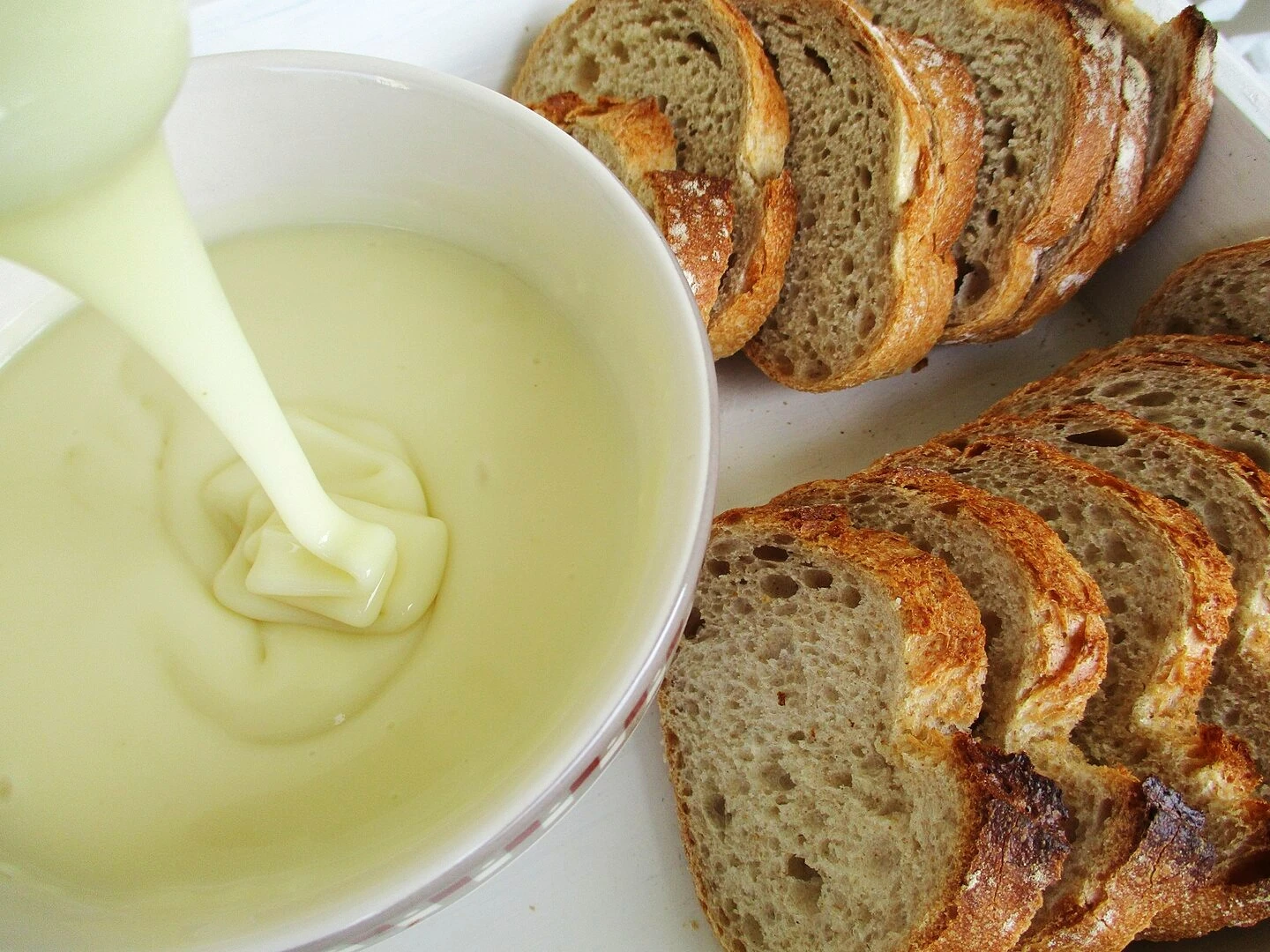
Cancoillotte cheese with country bread—nothing better! Photo selected by monsieurdefrance.com: By Arnaud 25—Personal work, CC BY-SA 4.0, https://commons.wikimedia.org/w/index.php?curid=61951473
8 goat cheeses
Crottin de Chavignol, Rocamadour, Brocciu de Corse... There are many types of goat's and sheep's milk cheeses. They can also be found in the families we have already discovered. The best are fresh cheeses, sometimes ash-coated or flavored. They are so delicious in spring and summer.
Goat cheeses. Photo selected by monsieurdefrance.com; freeprod/depositphotos:
When and how do people eat cheese in France?
In France, cheese is usually eaten after the main course, before dessert.
In restaurants, it may be offered à la carte or as a cheese platter. At home, it is often shared in the center of the table, accompanied by bread.
👉 It is normal for cheese to have a strong smell: this does not mean that it is bad, quite the contrary.
Which wine goes with cheese?
Today, it is common to be offered a cheese-based cocktail reception, or a combination of cheese and cold cuts with another French staple: bread. In a traditional French meal, cheese is served just before dessert. It is presented on a cheese platter (3, 5 or even 7 cheeses). The cheese platter can be accompanied by dried fruit (nuts, etc.) and grapes. You can also offer a little jam or chutney. It is good manners to offer butter (note: salted butter in Brittany) and a good green salad dressed with a good vinaigrette (remember that in France, we don't cut our salad, we fold it!).
At the table, in addition to water, of course, cheese is traditionally eaten with wine, preferably red, although white wine is gaining ground (camembert can be enjoyed with a good fruity white wine) as is cider.
Red wine is often the wine of choice to accompany a cheese platter. Photo selected by monsieurdefrance.com: depositphotos.
Alcohol abuse is dangerous for your health, consume in moderation.
Can you buy cheese when traveling in France?
Yes, and it's even one of the best gastronomic souvenirs to bring back. Cheese shops often sell vacuum-packed cheeses that are suitable for transport. However, some very strong-smelling cheeses are not recommended for air travel, especially in the cabin.
👉 Don't hesitate to ask for advice: cheese makers love explaining their products.
The most famous cheeses by region
Traveling in France also means traveling through its cheeses.
From the Alps to Normandy, from Brittany to the Pyrenees, each region has its own specialties, often linked to the climate, mountains, or local pastures.
Auvergne-Rhône-Alpes:
Abondance, Bleu d'Auvergne, Bleu (de Bresse, Langeac, de Gex, du Vercors, etc.), Fourme d'Ambert, Laguiole, Tomme au foin, Reblochon, Saint Marcellin, Saint Nectaire.
Burgundy-Franche-Comté:
Brillat Savarin, Cancoillotte, Chaource, Chavignol, Epoisse, Tomme du Jura, Mont d'Or.
Corse
Brocciu, brousse, Corsican sheep's milk tomme, and a myriad of other cheeses to discover.
Grand Est:
Brie de Meaux, Epoisse, Munster.
Hauts-de-France:
Maroilles, Mimolette
Normandy:
Camembert, Livarot, Pont l'évêque, Neufchâtel, Saint Paulin.
New Aquitaine
Chabichou du Poitou, Rocamadour, and all Basque cheeses, including Ossau-Iraty.
Occitanie
Roquefort, Rocamadour.
Provence-Alpes-Côte d'Azur
Banon, Brousse, Tomme de Provence.
The funniest names
The priest from Nantes, Hercules, Taupinette, Pigouille, the five brothers from Bermonville, the stepmother, hay pithiviers, the menhir (in Brittany, of course), the spinning stone ball, or the cat's tooth.
French cheeses at the market / Photo selected by Monsieur de France: by David Vives from Pixabay
FAQ – Different types of cheese in France
What is French cheese?
French cheese is a collective term for the many cheeses produced across France using different milks, methods and aging processes. It is known for its diversity rather than a single defining style.
What does French cheese taste like?
French cheese can range from mild and creamy to strong and pungent. The taste depends on the type of cheese, the milk used and how long it is aged.
What are the main types of French cheese?
The main types include soft cheeses, pressed cheeses, blue cheeses, fresh cheeses and cheeses made from goat or sheep milk.
Why is French cheese famous?
French cheese is famous because of its wide variety, long history and strong connection to regional traditions and craftsmanship.
What is the history of French cheese?
French cheese history spans centuries, shaped by local farming, preservation needs and regional know-how, resulting in one of the richest cheese traditions in the world.
What are the different types of French cheeses?
The different types of French cheese include soft cheeses, pressed cheeses (cooked or uncooked), blue cheeses, fresh cheeses, and goat and sheep cheeses.
How should French cheeses be classified?
French cheeses are classified according to their method of production, the texture of their paste, the type of milk used, and the length of time they are aged.
Sorry for any mistranslations. We had a cheese and red wine aperitif yesterday, which ended very, very late. The translator is still in bed as we write...

